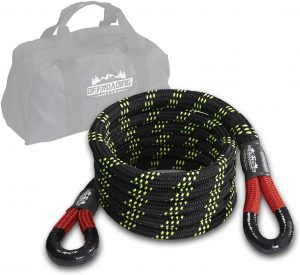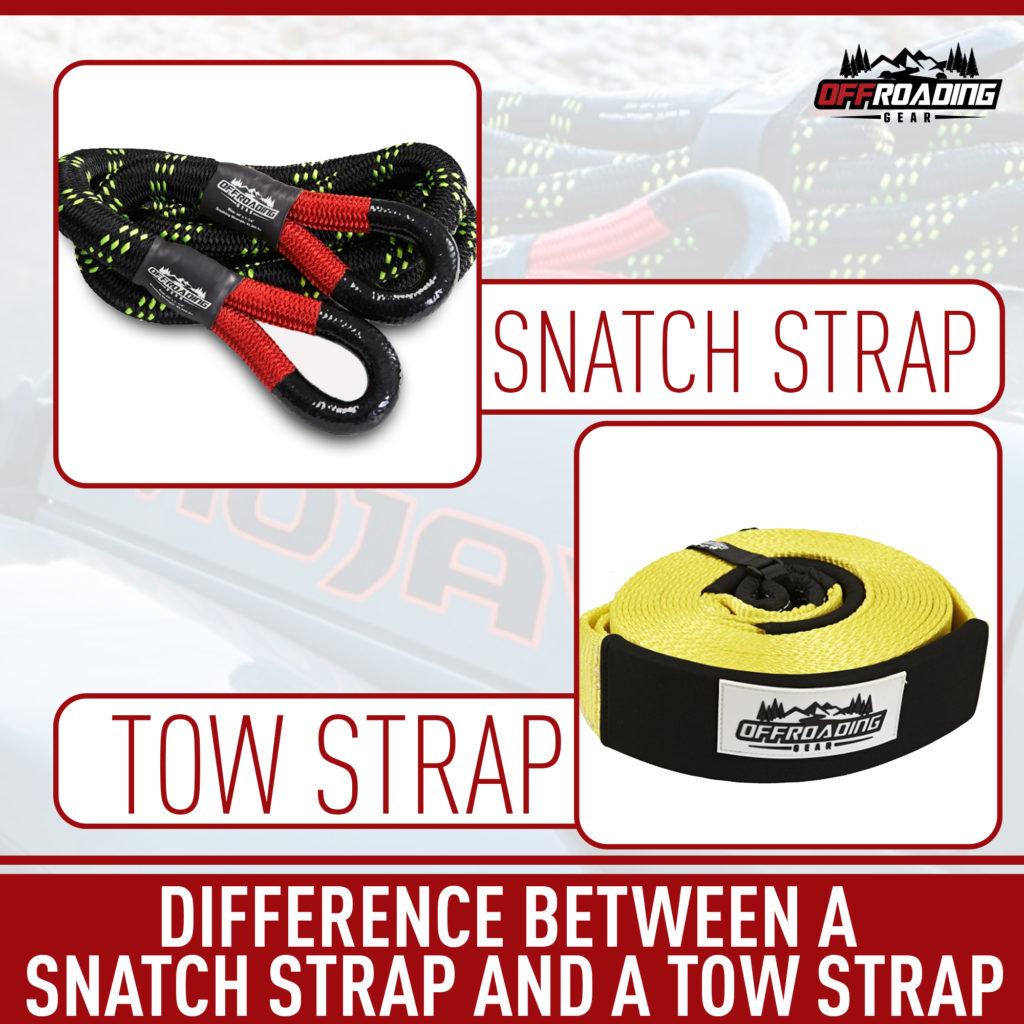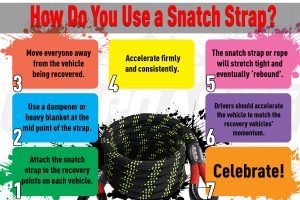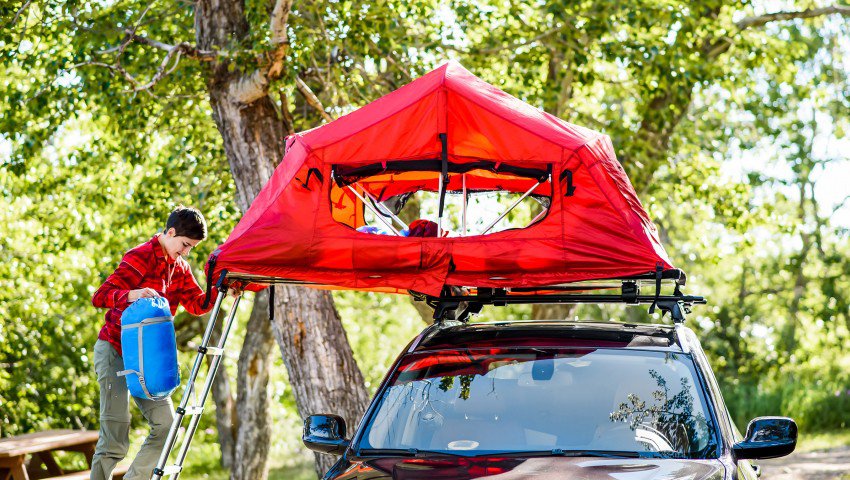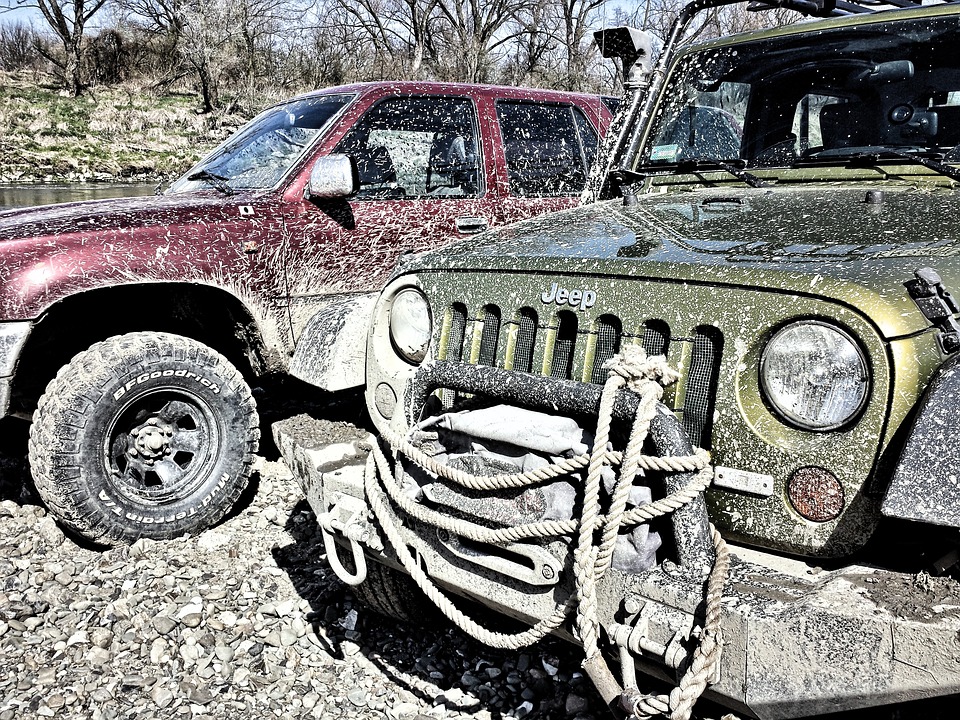Snatch Straps – What Size, Length and Type?
What Is a Snatch Strap?
A snatch strap is simply a strap or a snatch rope used to help recover a vehicle that is stuck in the mud, snow, or sand. Often they’re also called kinetic recovery straps or kinetic recovery ropes.
A snatch strap works by stretching out while recovering another vehicle, storing kinetic energy and then snapping back, once the stuck vehicle starts to become unstuck.
The magic with snatch straps is that they are strong enough to stretch up to 20% without snapping.
What’s the Difference Between a Snatch Strap and a Tow Strap?
The quick answer is a snatch strap stretches and a tow strap doesn’t.
A snatch strap will elongate up to 20% and store up kinetic energy and then snap back. That’s how you get unstuck.
A tow strap on the other hand, by definition, should have little or no elongation.
If you use a tow strap to try and recover a vehicle, the strap will have a higher likelihood of failure (and also will not give you the boost of kinetic energy to help unstuck the vehicle). The same is true if you use a snatch strap to tow a vehicle. Truth be told, in a bind, many 4x4ers have been known to use each kind of strap for their unintended purposes. But now you know the risks of each.
How Much Elongation Do I Need in a Snatch Strap?
Generally, you want approximately 20% elongation. Anything less will will not store enough kinetic energy.
What’s the Difference Between Snatch Straps and Snatch Ropes?
Snatch straps are made from nylon webbing and snatch ropes are made from nylon rope.
Snatch straps and snatch ropes perform nearly identically but the main difference is in longevity and strength.
Snatch straps can only be used 2-3 times while snatch ropes can be used many times over. The difference is because the fibers in the nylon webbing on the former have a tendency to fail once it has been stretched. The latter, on the other hand, has a tendency to go back to its unstretched length after being used. Neither ropes nor straps can be used forever, but you’ll get a much longer life out of your rope.
Check out also our comparison article on Synthetic Rope and Wire Cable.
What Type of Material Do I Want in a Snatch Strap?
Almost all snatch ropes and straps are made from nylon.
Nylon has a tendency to stretch (although it’s also possible to get non-stretching nylon). Other fibers like Polypropylene do not generally stretch.
When looking for ropes or straps, look to see if they are made of nylon. If not, be cautious that they may in fact not be snatch straps/ropes and may actually be tow straps/ropes.
How Long Should a Snatch Strap Be?
Typically, snatch straps are 20′ in length. This allows for enough distance between the stuck vehicle and the vehicle doing the recovering and short enough to store a sufficient amount of kinetic energy.
How Do You Use a Snatch Strap?
- Find your vehicle’s recovery points.
- Make sure to avoid the strap from ricocheting and potentially hitting someone.
- Keep a distance of at least 30″ away if using a 20″ strap, from the vehicle being recovered.
- No heavy foot here!
- Wait for the snatch rope to stretch tight.
- Pull correctly by moving the vehicle in accordance with the recovery vehicle’s momentum.
- Rejoice on your successful 4×4 recovery.
Conclusion
Snatch straps are one of the most valuable pieces of off-road equipment to keep in your 4×4. Make sure to purchase real snatch straps and not tow straps, then eagerly await for your vehicle to get stuck, so you can try them out.
What’s your favorite recovery technique? Let me know in the comments section below.
